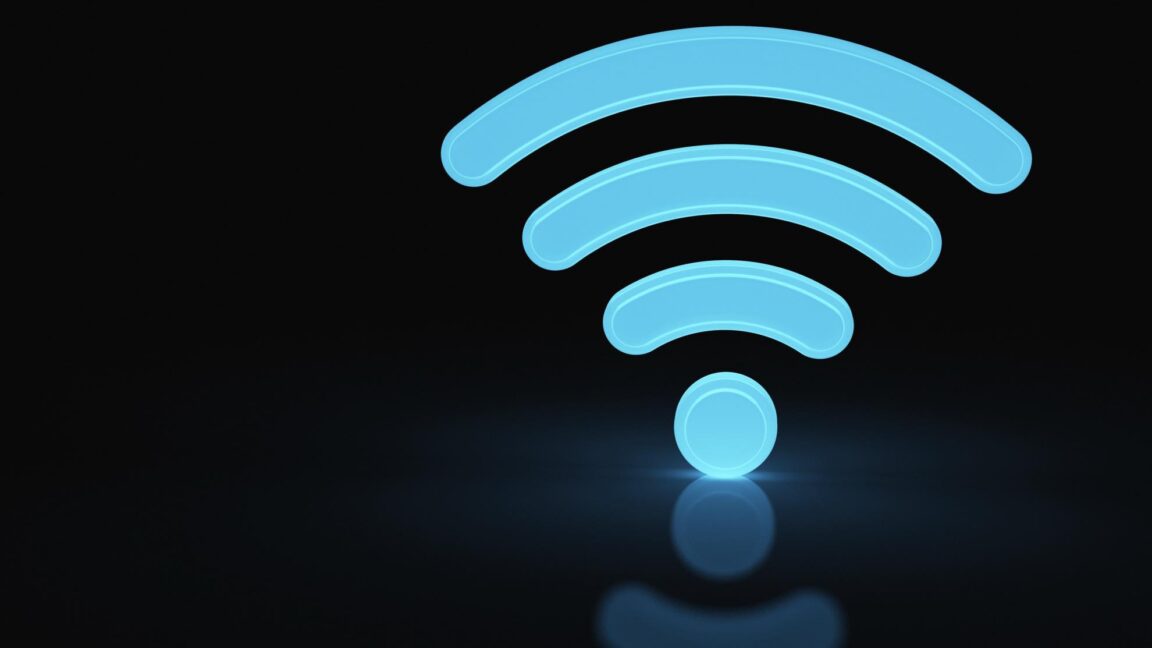Scientists make game-changing breakthrough that could slash costs of solar panels: 'Has the potential to contribute to the energy transition'
-
cross-posted from: https://slrpnk.net/post/24690127
Solar energy experts in Germany are putting sun-catching cells under the magnifying glass with astounding results, according to multiple reports.
The Fraunhofer Institute for Solar Energy Systems team is perfecting the use of lenses to concentrate sunlight onto solar panels, reducing size and costs while increasing performance, Interesting Engineering and PV Magazine reported.
The "technology has the potential to contribute to the energy transition, facilitating the shift toward more sustainable and renewable energy sources by combining minimal carbon footprint and energy demand with low levelized cost of electricity," the researchers wrote in a study published by the IEEE Journal of Photovoltaics.
The sun-catcher is called a micro-concentrating photovoltaic, or CPV, cell. The lens makes it different from standard solar panels that convert sunlight to energy with average efficiency rates around 20%, per MarketWatch. Fraunhofer's improved CPV cell has an astounding 36% rate in ideal conditions and is made with lower-cost parts. It cuts semiconductor materials "by a factor of 1,300 and reduces module areas by 30% compared to current state-of-the-art CPV systems," per IE.
How does concentrating the sunlight like this not start a fire? Or wouldn’t this at least cause panel electronics to overheat?
-
I am not a scientist so please correct me if I am off base, but did it really take them this long to attempt to focus light onto PV cells using a fresnel lens?
My hobby as a 15 year old was buying broken projectors to harvest the fresnel lenses in the lamp on top. They could focus sunlight so powerfully that you could burn shit. I didn't do that, surprisingly. I was like Marge Simpson, I just thought they were neat.
Not being any kind of solar energy expert, my initial thought was how the cell’s would hold up under the increased heat, and what technology (if any) they’d be using to monitor/mitigate. The article does briefly mention the cells achieving ~33% @ ~167° F, and does mention (what seems to be tangential) technologies that allow for cells to be nailed down as if they were shingles.
My guess is that it isn’t that they finally using techniques that seem obvious to us, but that they’ve developed supporting tech to mitigate the detrimental effects of using magnification.
-
I am not a scientist so please correct me if I am off base, but did it really take them this long to attempt to focus light onto PV cells using a fresnel lens?
My hobby as a 15 year old was buying broken projectors to harvest the fresnel lenses in the lamp on top. They could focus sunlight so powerfully that you could burn shit. I didn't do that, surprisingly. I was like Marge Simpson, I just thought they were neat.
Adding to what the others wrote, solar cells become less efficient at power conversion (light -> electricity) as the temp of the solar cell materials (semiconductors) increases. So the issues is how to get more photons to the semiconductor without heating it up.
-
cross-posted from: https://slrpnk.net/post/24690127
Solar energy experts in Germany are putting sun-catching cells under the magnifying glass with astounding results, according to multiple reports.
The Fraunhofer Institute for Solar Energy Systems team is perfecting the use of lenses to concentrate sunlight onto solar panels, reducing size and costs while increasing performance, Interesting Engineering and PV Magazine reported.
The "technology has the potential to contribute to the energy transition, facilitating the shift toward more sustainable and renewable energy sources by combining minimal carbon footprint and energy demand with low levelized cost of electricity," the researchers wrote in a study published by the IEEE Journal of Photovoltaics.
The sun-catcher is called a micro-concentrating photovoltaic, or CPV, cell. The lens makes it different from standard solar panels that convert sunlight to energy with average efficiency rates around 20%, per MarketWatch. Fraunhofer's improved CPV cell has an astounding 36% rate in ideal conditions and is made with lower-cost parts. It cuts semiconductor materials "by a factor of 1,300 and reduces module areas by 30% compared to current state-of-the-art CPV systems," per IE.
Remember gang, stuff like this means 10-15 years before you see it in market.
-
Honestly, we don't need the technology to get any better than it is. It's nice, but not necessary. Labor costs of deployment are the biggest limiting factor.
If you get efficiency gains of around 50% (factor 1.5 from ~20% efficiency to ~30%) with the same deployment costs, this should nonetheless make it more cost-effective.
-
A lighthouse uses the same lens, just with the light coming from the inside. Since this is old knowledge, what is the drawback? Why isn't this widespread?
My completely uninformed guess:
-
The lens and assembly costs too much compared to just more solar panels
-
The lens/panel combo is so bulky/prone to failure it becomes unreasonable to actually install/use.
costs too much
Various trade wars are changing those economics.
-
-
Honestly, we don't need the technology to get any better than it is. It's nice, but not necessary. Labor costs of deployment are the biggest limiting factor.
Wouldn't better efficiency lead to less physical requirements for the same output which leads to lower labour costs?
-
Remember gang, stuff like this means 10-15 years before you see it in market.
What was the stuff like this of 15 years ago ?
-
cross-posted from: https://slrpnk.net/post/24690127
Solar energy experts in Germany are putting sun-catching cells under the magnifying glass with astounding results, according to multiple reports.
The Fraunhofer Institute for Solar Energy Systems team is perfecting the use of lenses to concentrate sunlight onto solar panels, reducing size and costs while increasing performance, Interesting Engineering and PV Magazine reported.
The "technology has the potential to contribute to the energy transition, facilitating the shift toward more sustainable and renewable energy sources by combining minimal carbon footprint and energy demand with low levelized cost of electricity," the researchers wrote in a study published by the IEEE Journal of Photovoltaics.
The sun-catcher is called a micro-concentrating photovoltaic, or CPV, cell. The lens makes it different from standard solar panels that convert sunlight to energy with average efficiency rates around 20%, per MarketWatch. Fraunhofer's improved CPV cell has an astounding 36% rate in ideal conditions and is made with lower-cost parts. It cuts semiconductor materials "by a factor of 1,300 and reduces module areas by 30% compared to current state-of-the-art CPV systems," per IE.
SLASH THE GAME CHANGING BREAKTHROUGH
-
A lighthouse uses the same lens, just with the light coming from the inside. Since this is old knowledge, what is the drawback? Why isn't this widespread?
My completely uninformed guess:
-
The lens and assembly costs too much compared to just more solar panels
-
The lens/panel combo is so bulky/prone to failure it becomes unreasonable to actually install/use.
I suspect that the lens makes the whole solar assembly more directional and the Sun moves in the sky.
-
-
Wouldn't better efficiency lead to less physical requirements for the same output which leads to lower labour costs?
My numbers were wrong:
Hardware costs (module, inverters, etc.) are about half the price of the installed residential cost. The rest is "soft costs", and labor is included in it, but it's a pretty small fraction of it. The "other" soft costs are the big thing--stuff like permitting and planning and sales taxes. Better efficiency might somewhat lower it, but not a lot.
Notice that when things get to utility-scale, those soft costs shrink a lot. The best way to do solar is in large fields of racks, and it isn't even close. The solution to this is community solar, where you and your neighbors go in on a field. Some states ban this, and that should change.
-
I think the idea is that it’s the same amount of light is being used but the actual expensive part of the solar cell is cheaper and designed to take the increased heat. So the same size “solar unit” on the roof collecting the same amount of light and generating the same amount of energy but cheaper overall. At least that was my take. Correct me if I’m wrong.
Yeah, a similar amount for less money could be feasible. I guess. Not sure how cheap the sanding of the lens structure is though
-
What was the stuff like this of 15 years ago ?
Honestly solar panels and electric cars. I know those existed over 15 years ago, but they weren't serious market options until like 5 or so years ago.
-
cross-posted from: https://slrpnk.net/post/24690127
Solar energy experts in Germany are putting sun-catching cells under the magnifying glass with astounding results, according to multiple reports.
The Fraunhofer Institute for Solar Energy Systems team is perfecting the use of lenses to concentrate sunlight onto solar panels, reducing size and costs while increasing performance, Interesting Engineering and PV Magazine reported.
The "technology has the potential to contribute to the energy transition, facilitating the shift toward more sustainable and renewable energy sources by combining minimal carbon footprint and energy demand with low levelized cost of electricity," the researchers wrote in a study published by the IEEE Journal of Photovoltaics.
The sun-catcher is called a micro-concentrating photovoltaic, or CPV, cell. The lens makes it different from standard solar panels that convert sunlight to energy with average efficiency rates around 20%, per MarketWatch. Fraunhofer's improved CPV cell has an astounding 36% rate in ideal conditions and is made with lower-cost parts. It cuts semiconductor materials "by a factor of 1,300 and reduces module areas by 30% compared to current state-of-the-art CPV systems," per IE.
Wait for something fucking idiotic like:
"U.S. government to implement 5,000% tax on new solar technology...."
-
OK, take that Fresnel lens that you were using to melt pennies and then focus it on a PV cell that is also made of metal. What might be the expected response? The science in this case is making PV cells that can handle the intense heat.
That makes sense. If I understood everyone clearly, it's not the idea to use a fresnel that's new here, it's the fact that we just haven't yet had anything capable of withstanding those temperatures and still allowing for the piezoelectric effect to happen.
-
cross-posted from: https://slrpnk.net/post/24690127
Solar energy experts in Germany are putting sun-catching cells under the magnifying glass with astounding results, according to multiple reports.
The Fraunhofer Institute for Solar Energy Systems team is perfecting the use of lenses to concentrate sunlight onto solar panels, reducing size and costs while increasing performance, Interesting Engineering and PV Magazine reported.
The "technology has the potential to contribute to the energy transition, facilitating the shift toward more sustainable and renewable energy sources by combining minimal carbon footprint and energy demand with low levelized cost of electricity," the researchers wrote in a study published by the IEEE Journal of Photovoltaics.
The sun-catcher is called a micro-concentrating photovoltaic, or CPV, cell. The lens makes it different from standard solar panels that convert sunlight to energy with average efficiency rates around 20%, per MarketWatch. Fraunhofer's improved CPV cell has an astounding 36% rate in ideal conditions and is made with lower-cost parts. It cuts semiconductor materials "by a factor of 1,300 and reduces module areas by 30% compared to current state-of-the-art CPV systems," per IE.
If I had a penny for every time I heard about new advancements about to revolutionise solar panel technology, I'd have glazed the bloody Sahara with them by now.
-
What was the stuff like this of 15 years ago ?
More expensive and less efficient.
-
Honestly solar panels and electric cars. I know those existed over 15 years ago, but they weren't serious market options until like 5 or so years ago.
First known electric car was built in 1837. Yes, 1837, not 1937. In 1910's and 1920's there were tens of thousands electric cars in USA and Europe. So electric cars has been here for a long time right now.
First (known) solar panel was built in 1954.
-
cross-posted from: https://slrpnk.net/post/24690127
Solar energy experts in Germany are putting sun-catching cells under the magnifying glass with astounding results, according to multiple reports.
The Fraunhofer Institute for Solar Energy Systems team is perfecting the use of lenses to concentrate sunlight onto solar panels, reducing size and costs while increasing performance, Interesting Engineering and PV Magazine reported.
The "technology has the potential to contribute to the energy transition, facilitating the shift toward more sustainable and renewable energy sources by combining minimal carbon footprint and energy demand with low levelized cost of electricity," the researchers wrote in a study published by the IEEE Journal of Photovoltaics.
The sun-catcher is called a micro-concentrating photovoltaic, or CPV, cell. The lens makes it different from standard solar panels that convert sunlight to energy with average efficiency rates around 20%, per MarketWatch. Fraunhofer's improved CPV cell has an astounding 36% rate in ideal conditions and is made with lower-cost parts. It cuts semiconductor materials "by a factor of 1,300 and reduces module areas by 30% compared to current state-of-the-art CPV systems," per IE.
"Has the potential to contribute...." Wow. Amazing.
-
If I had a penny for every time I heard about new advancements about to revolutionise solar panel technology, I'd have glazed the bloody Sahara with them by now.
Would the cost chart of PV cells look something like this?









